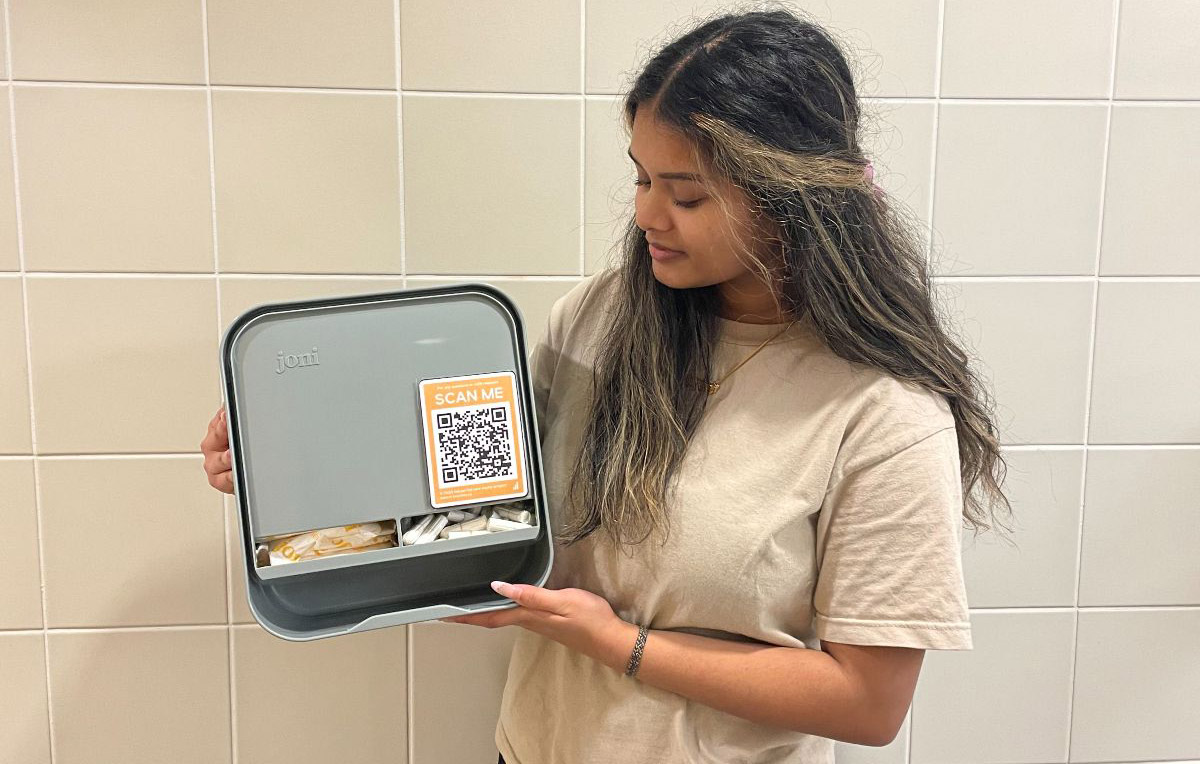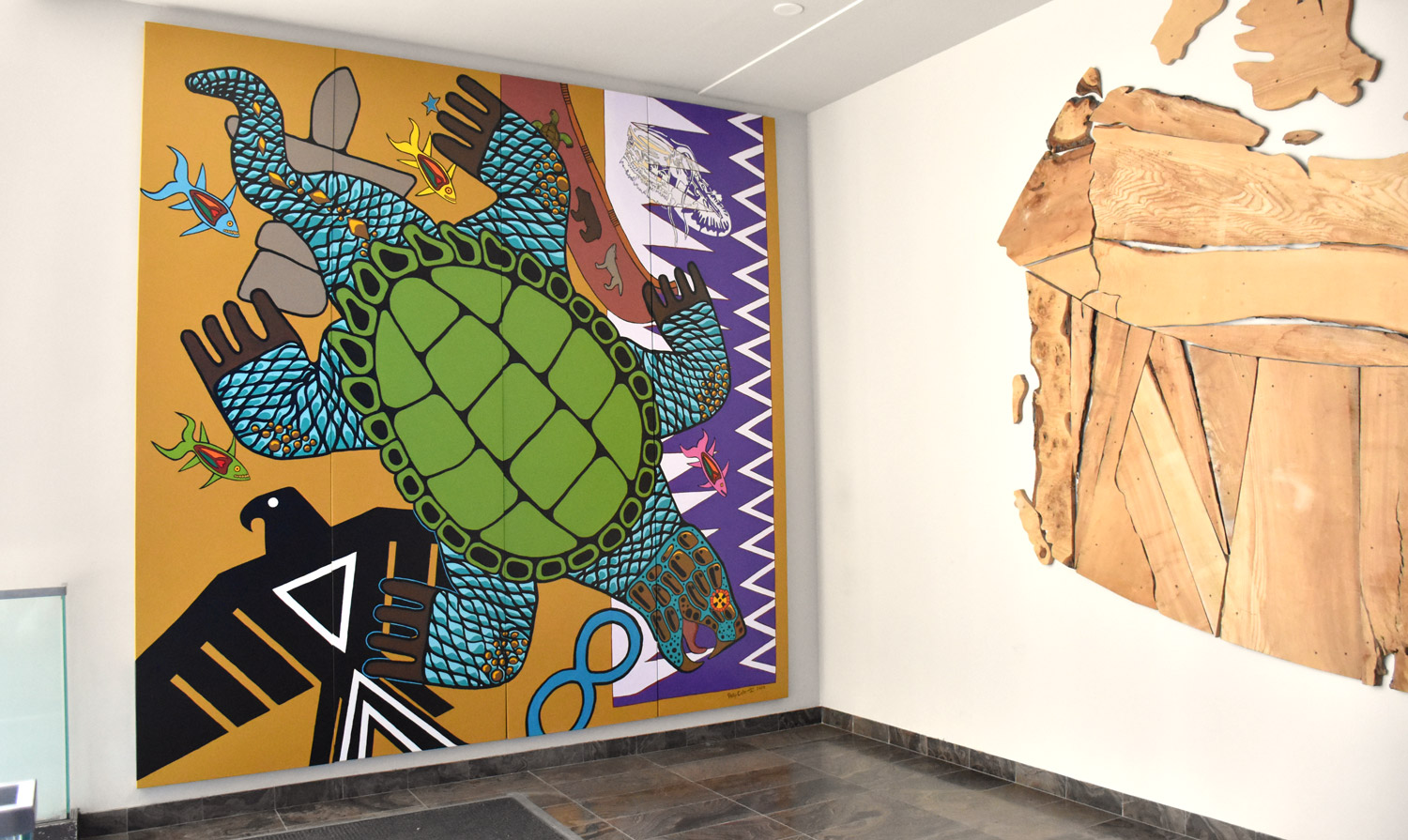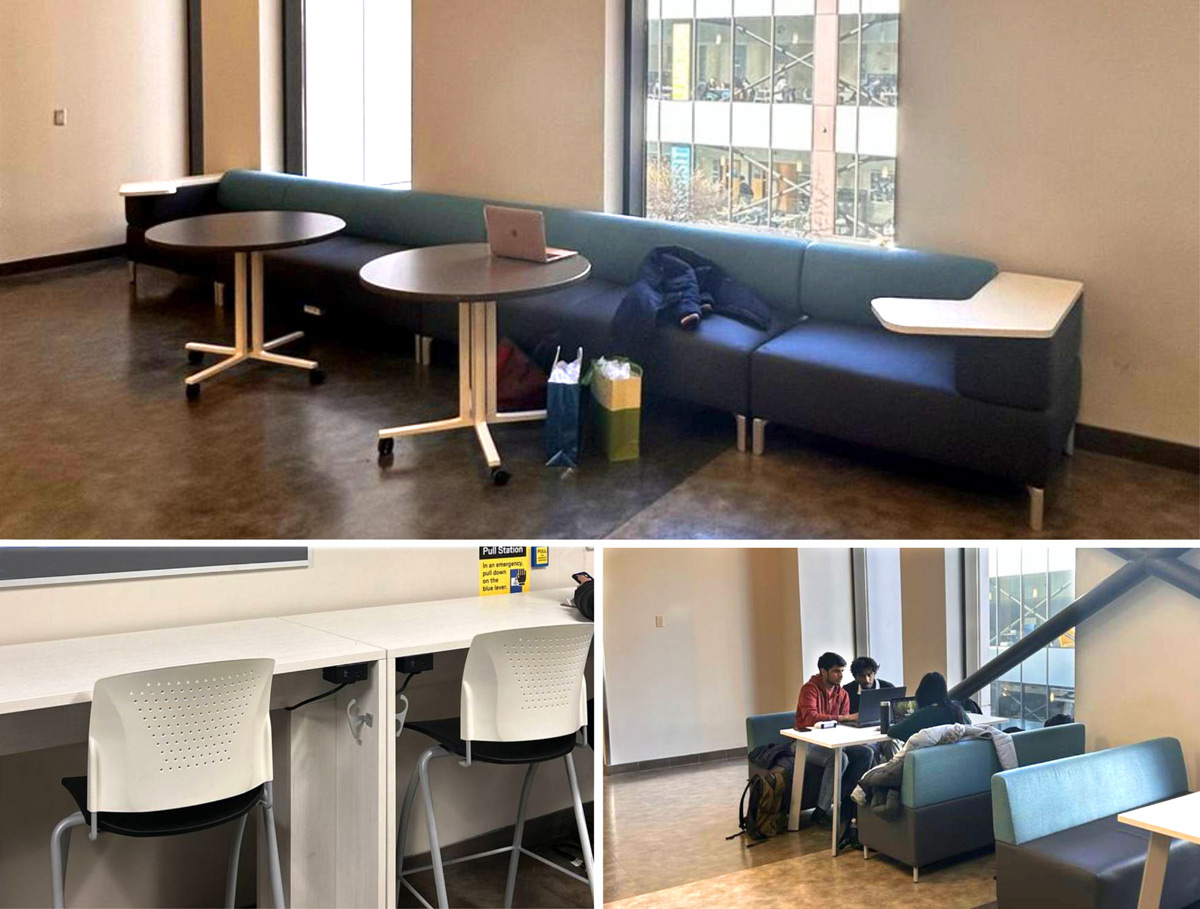Placemaking and Placekeeping
In 2023, TMU researchers explored the impacts of placemaking on behavioural intentions. “Placemaking” efforts, such as the inclusion of art installations or other elements in a public space, have a positive impact on people’s feelings about their environment and increase the likelihood they will spend more time there, look up more information about the location or recommend a visit to others. Placemaking is also an approach to public space design that places social innovation and local communities at the heart of the planning process, with the aim of shaping healthier and more equitable public spaces. Inside the Ted Rogers School, our community has continued its efforts towards making an inclusive environment.

TRSS, through a partnership with Joni, a sustainable period care company, initiated the Period Equity Project. For the first time, free menstrual products are now available through dispensers throughout the Ted Rogers School, for staff, faculty, guests and students. Through this initiative, TRSS aims to address period poverty and promote menstrual equity, as well as to continue to promote the health and well-being of the student population. Over 16,000 period care products were distributed within the Ted Rogers School washrooms in the Winter 2024 semester.

In May, the Ted Rogers School installed a new artwork – ‘Indigenous History of the Land,' a mural painted by Indigenous artist Philip Cote. This mural was created by Philip Cote, young spiritual Elder, Indigenous artist and ancestral knowledge keeper to acknowledge the Indigenous land the Ted Rogers School stands on and is located on the landing beneath the 7th floor.
This art installation project was an outcome of a community dialogue with Indigenous entrepreneurs on what would contribute to a sense of belonging inside the Ted Rogers School. The answer: Art! ‘Indigenous History of the Land’ includes the following visual representations: snapping turtle for Turtle Island, fish depicting the intellect of Indigenous communities, thirteen moon calendar and the Tadadaho belt for the great peace between five nations. The thunderbird represents the Three Fires Confederacy, the canoe with animal silhouettes represents the Wendat Neutral Petun peoples, the Inuksuk with blue star represents the Inuit people, and the infinity symbol represents Métis people. The moccasin (Nation: Anishinaabe) serves as a visual acknowledgement that we are within Treaty No. 13 territory and the traditional lands of the Ojibway, the Mississaugas of the Credit First Nation, the Haudenosaunee and the Huron Wendat peoples.
Modern, functional furniture is now available in common areas of the Ted Rogers School thanks to a student-led initiative. This project was funded by TRSS with over $55,000 being invested in the project to replace outdated furniture on the 8th and 9th floors of the Ted Rogers School. With in-person classes returning again and students being active on campus, the Revitalization Project aimed to renew student spaces to improve the environment. This approach to placemaking through design changes increased the comfort and enjoyment of the space, both facets for creating a sense of belonging for students.

